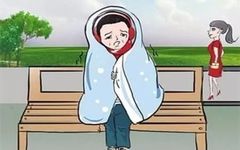The most common seasons for colds are not winter or summer, but spring and autumn, as the winds are strong and the temperatures are suitable. People tend to be less vigilant during these times, and the wind feels pleasant on the skin, making it easy for the wind pathogen to enter the body.

Wind-cold type common cold occurs when a person is affected by wind and cold. Symptoms include: aversion to cold, fever, no sweating, headache, body aches, nasal congestion with a heavy voice, or itchy nose with sneezing, clear nasal discharge, itchy throat, cough with thin white phlegm, no thirst or preference for warm drinks, a thin white and moist tongue coating, and a floating or tight pulse.
Many people may recognize these symptoms as indicative of a wind-cold common cold, but they do not understand the differentiation of syndromes. Therefore, we will explain the above symptoms:
Aversion to Cold:
Our body is very wise. When we are exposed to wind and cold, the body reacts by closing the pores to prevent more cold pathogens from entering. However, this also poses a problem: it traps the already entered wind-cold pathogens beneath the skin, causing us to feel cold, which is termed aversion to cold. Aversion to cold indicates that there are cold pathogens trapped beneath the skin that have not dispersed.
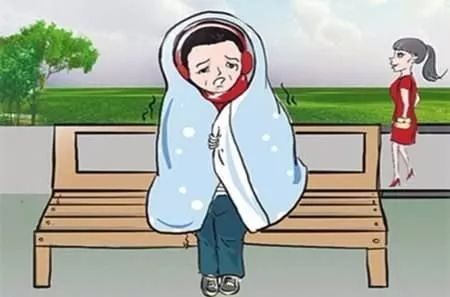
Fever:
Fever is a response where cold enters the body and transforms into heat. Readers may wonder how cold pathogens can transform into heat. In fact, our body is fighting against the cold pathogens. Our qi, blood, and body fluids represent the righteous qi, which is battling against the evil qi. When both sides are in fierce combat, the body temperature rises. Children are particularly prone to fever because their righteous qi is strong, allowing them to react quickly. Fever is a normal response of our body’s defense system, akin to military training. Doctors also mention that those who never experience fever do not necessarily have good health; rather, it may indicate a weak body with poor resistance. Why? Because weak righteous qi cannot combat the evil qi, allowing it to invade the body without resistance, leading to internal illness before a fever can even occur. Therefore, fever is a reflection of the struggle between righteous and evil qi, during which the body’s qi, blood, and fluids are mobilized to the battlefield, resulting in elevated surface temperature. Generally, children have sufficient kidney qi and are more responsive, making them prone to high fevers. Additionally, the closure of pores prevents internal heat from dissipating, which also contributes to fever.

Traditional Chinese Medicine (TCM) strongly opposes the use of antibiotics and intravenous drips at the onset of fever. While cold and cooling antibiotics can temporarily reduce fever, they do not expel the evil qi. It is akin to a cold rain driving both sides away; the cold evil qi, being cold itself, is not affected by cold antibiotics. Once the antibiotics wear off, the evil qi can re-enter. The initial wave of righteous qi is harmed by the antibiotics, making it difficult to recover. As a result, after the first wave of righteous qi is weakened by antibiotics, the fever subsides, but when the second wave of righteous qi attempts to combat the evil qi, recurrent fevers may occur. Repeated use of antibiotics can weaken the body, leading to symptoms such as cough, spleen and stomach deficiency, or general weakness, as the evil qi remains. Consequently, a person may easily catch a cold again upon exposure to wind and cold.

The lungs are delicate organs and are easily invaded, making lung diseases common after a cold and fever. Therefore, we should understand that we must not treat fever as the source of illness, as fever is merely a symptom.
No Sweating:
This indicates that the pores are closed, preventing both heat and cold from dissipating. Therefore, we need to use exterior-releasing herbs to open the pores and allow the evil qi to disperse. The lungs govern the skin and hair, and they have a function of dispersing and descending, which involves expelling turbid qi and inhaling clear qi from the outside. If our body does not sweat, we need to use exterior-releasing herbs such as Ma Huang (Ephedra), Su Ye (Perilla Leaf), or Sheng Jiang (Fresh Ginger) to open the pores.
Headache and Body Aches:
When cold pathogens invade, they can cause stagnation, leading to blood stasis and obstruction of the meridians. Consequently, areas where blood vessels are concentrated, such as the head, and joints that require nourishment, may experience pain. At this time, there is no need for specific medications to treat headaches or body aches; simply dispersing the cold will alleviate the symptoms.
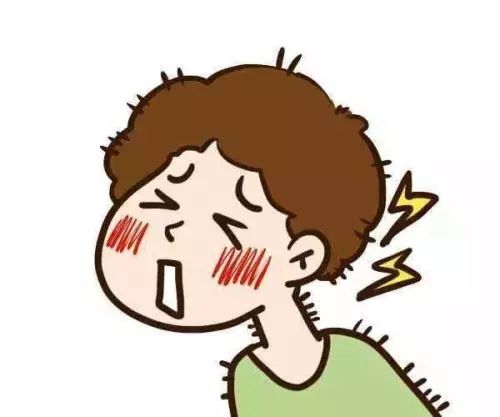
Nasal Congestion with Heavy Voice:
The lungs open to the nose, and since the lungs are delicate organs, the evil qi first invades through the mouth and nose, affecting the lungs. Therefore, the lungs must expel the evil qi. When the pores are closed, the nose becomes an outlet, leading to clear nasal discharge, which indicates the presence of cold. Nasal discharge is a normal response of the body to expel evil qi; once it is expelled, the discharge will cease. Nasal congestion occurs because lung qi is reversed; normally, lung qi descends, but now it ascends, causing blockage in the nostrils. Thus, nasal congestion with a heavy voice indicates lung damage, and we need to help restore the lung’s dispersing and descending functions.

Itchy Throat:
Itching indicates the presence of wind. When both wind and cold pathogens are present, there will be an itchy sensation. At this time, we need to use not only cold-dispersing herbs but also wind-dispersing herbs, such as Fang Feng (Siler), Jing Jie (Schizonepeta), and Bai Zhi (Angelica Dahurica). If there is no itchy throat, there is no need for wind-dispersing herbs.
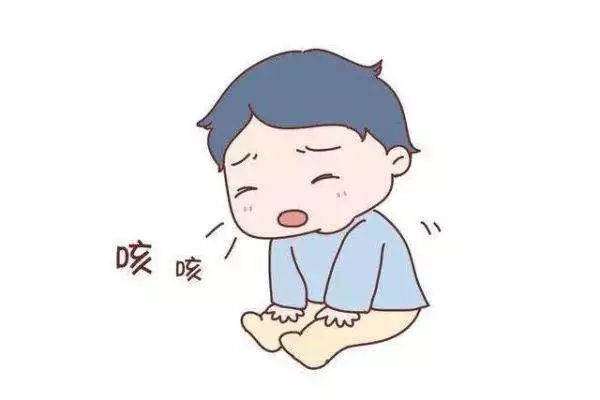
Cough:
Cough can be dry, hot, or cold, and it is difficult to distinguish between cold and heat based solely on the cough itself. However, there are a few methods to differentiate: First, go outside; if coughing worsens in the cold wind, it is likely a cold cough. If it feels comfortable in a cold place but worsens in a warm place, or if coughing worsens at night under the covers, it may be a hot cough. Second, observe the phlegm; if it is clear and thin, it indicates a cold cough, while yellow, thick, and sticky phlegm suggests a hot cough. Third, examine the tongue coating; a thick white coating and pale tongue indicate a cold cough, while a thick yellow coating and red tongue suggest a hot cough.

No Thirst:
During a wind-cold common cold, body fluids are not depleted. Thirst is not related to water intake but rather to the depletion of body fluids. Generally, in cold conditions, the body temperature is lower, and there is no burning of body fluids, so we do not feel thirsty. In contrast, in hot conditions, sweat evaporates and depletes body fluids, leading to thirst and a desire for cold water. Therefore, during a wind-cold common cold, there is no thirst, and there is a preference for warm water.
Floating Pulse:
When lightly resting a hand on the pulse, it can be felt to be strong and forceful. Since the evil qi enters through the mouth and nose and is related to the lungs, we generally check the right pulse. Lightly resting on the right pulse, the cun pulse corresponds to the lung pulse. A tight pulse feels like a tightly stretched rope, and a floating tight pulse indicates a cold condition.
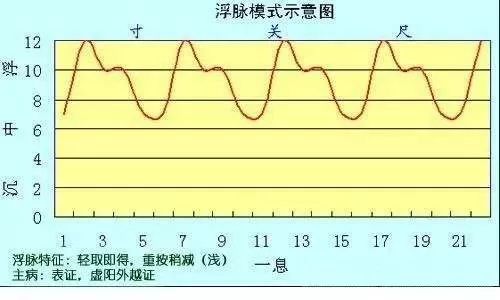
By reviewing these cold symptoms, we can determine the presence of cold or heat. The treatment method is to use warm and pungent exterior-releasing herbs to open the pores and allow the evil qi to disperse, letting the evil qi exit from where it entered.
In the next article, we will detail the Chinese patent medicines and dietary therapy for wind-cold common cold.


